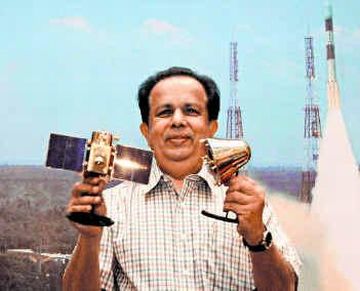
India is all set to have the Indian Regional Navigational Satellite System (IRNSS) soon in the lines of the Global Positioning System (GPS) at an investment of Rs 1,600 crore. The Indian Space Research Organisation (ISRO) is developing the India-specific navigation system, comprising seven satellites, to provide invaluable positioning and timing data to aircraft and ships operating in the region.
According to ISRO chairman G Madhavan Nair, the IRNSS will be ready to work till 2011-12. For this, India has planned to put a constellation of seven satellites into a geo-synchronous orbit in coming six years. The constellation of seven satellites would create a all-inclusive navigational system applicable in the South Asian region.
Nair said:
ISRO’s step forward to achieve the IRNSS system is very important to have an efficient navigation system for countries in the region. ISRO would launch the first of the seven satellites in 2009.
All the satellites will be carried on PSLVs. The cost of the project would touch Rs 1600 crore mark. The IRNSS produced information, like GPS data, will be easily accessible by everyone to use.
Nair further said that ISRO is likely to launch 60 satellites over the next five years. He also accepted that launching so many satellites would put ISRO under tremendous pressure but he also said that the target was unrealistic at all.
The indigenously developed navigation system will help the country’s specific needs like, providing infrastructure for generating data on position, navigation and timing, and also in the fields of agriculture, civil aviation and fisheries as well.
The US Defence Department is controlling the Global Positioning System. Russian scientists are working day and night to restoring its own navigation system of 24 satellites, called as Glonass, by 2009. Europe is also in process to build a satellite navigation system, named as Galileo, with a group of 30 satellites, till 2012-13.
At present, the ISRO has the capacity to launch 5-6 satellites every year and the ISRO is lunching four satellites per year. ISRO has decided to outsource more of the work to the industry, such as manufacture of satellite components.
With the help of such outsourcing, ISRO will definitely achieve target in next five-six years. ISRO has also planned to launch two GSLV and three PSLV satellites in next one year.
ISRO has also expressed its intention to send a spacecraft to Mars also. Nair said ISRO was waiting for the concrete proposals to be available once, and then India will be able to undertake a Mars mission. The Geosynchronous Satellite Launch Vehicle can take a 500-kg spacecraft to the Martian orbit anytime.
Earlier, Chandrayaan project director, Mylswamy Annadurai, had announced that India is all set to launch Chandrayaan-I on April 9, 2008. ISRO is likely to co-operate with Japanese Aerospace Exploratory Agency (Jaxa) for using their data for Indian lunar mission.
Read




